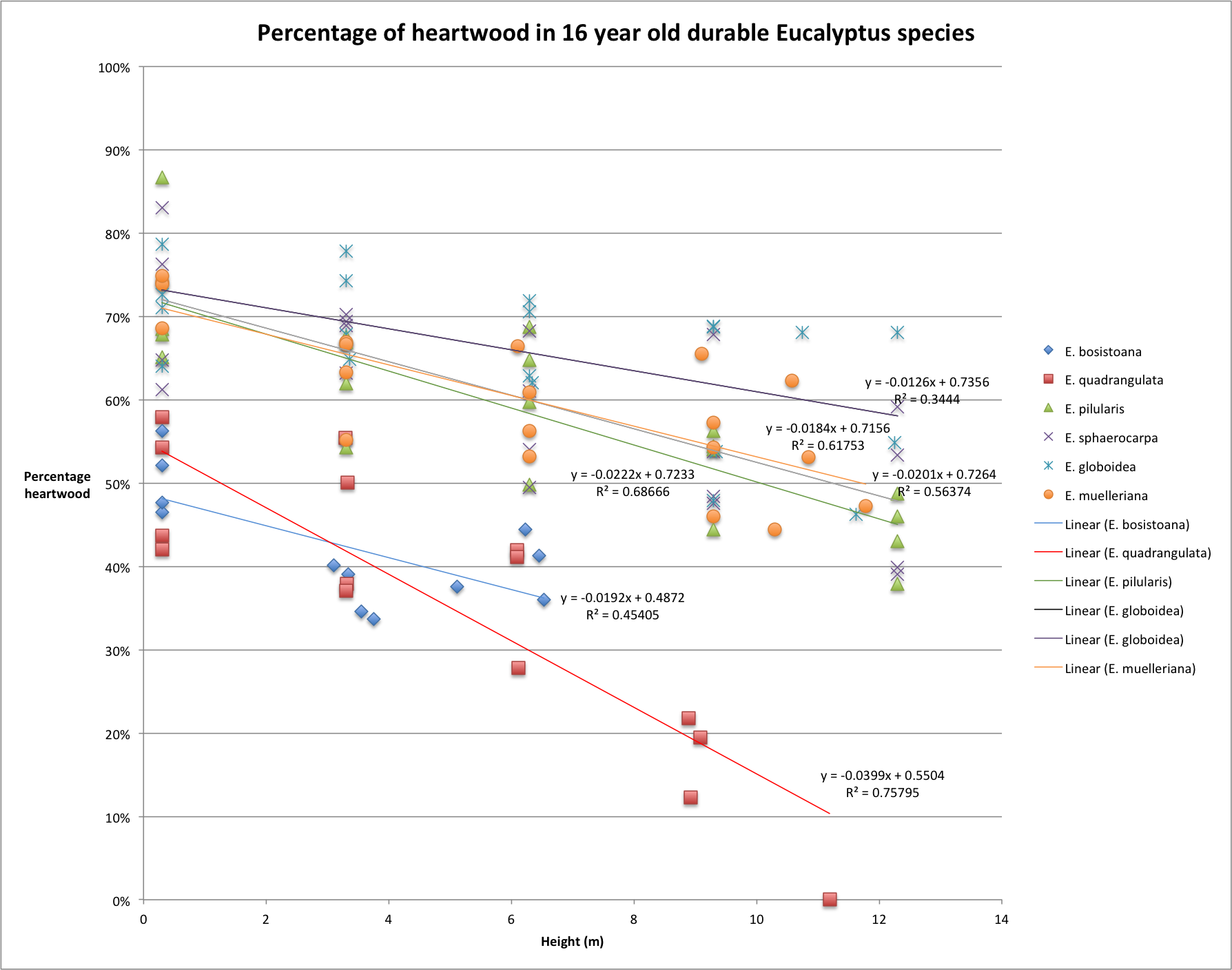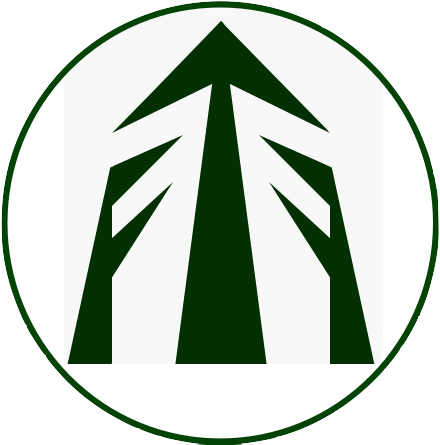Mechanical testing of durable eucalypts, 2019
Six durable eucalypt species were tested for strength and stiffness according to radial and vertical position in the tree. Sixteen year old trees from Northland were harvested, sawn, dried, and samples prepared. The samples were then tested at Scion. This report outlines the methods for preparing the samples and records the data.
METHODS AND NOTES
The following logs were not sawn or are not available:
3-1 (Not milled... can't find log or boards from log?)
10-2 (stakes cut but not photographed?)
13-2 (Not milled)
22-4 (Not milled)
No photos for sample 5-2-I-1.

This is actually 1-2-O-2

This is actually 5-1-I-2 (i.e. sample 2 from tree 5 log 1, inner).

This sample should not be read upside down. It is 1-1-O-1, NOT 1-O-1-1
All logs were cut to 3 m lengths. The trees were 16 years old, located at Purerua, Northland. Where possible samples were cut as near to the mid-section of the log and no samples were cut any closer than 0.5m to the end of the log.
Log 1 for all trees was sawn soon after felling in 2016. This material was fillet stacked and air-dried immediately after sawing.
Logs 2 and above were left on the ground for two years between harvesting and sawing into boards. This caused issues, in particular:
- Considerable decay in sapwood and severe end splitting of logs;
- Incipient decay on end splits and in some cases corewood
- E. bosistoana and to a lesser extent E. quadrangulata had some borer damage in both heartwood and sapwood;
- Internal checking was evident in some E. globoidea logs which caused downgrade in the sawn boards and stakes (cracking rendering the stakes unsuitable for mechanical testing);
- Browning of wood on the boundary between heart and sap. This was up to 5 mm, sometimes evident, sometimes not;
Other issues with species included:
E. bosistoana was the most difficult to saw and dress, with some chattering and chipping of grain when machining. E. bosistoana and E. sphaerocarpa appeared to be more dense than the other species but E. sphaerocarpa machined well. E. bosistoana had a wide sapwood band, an interlocked grain and also had the most sloping grain, likely because the trees were not straight. Stakes without sloping grain were rare.
E. muelleriana, E. pilularis, E. globoidea and E. quadrangulata heartwood were similar colour (light pinkish yellow) and density and virtually indistinguishable apart from the wide sap band in E. quadrangulata. E. sphaerocarpa was more yellowy brown, sometimes with a ribbon feature to the grain, interlocked and notably greasy. E. bosistoana varied in colour considerably, from light yellow brown to brown.
E. muelleriana and E. pilularis sawed the best, with low tension and movement off the saw. E quadrangulata also had low levels of movement but low heartwood recoveries because of the wide sapwood band. E. globodea and E. bosistoana had medium levels of movement off the saw and some E. sphaerocarpa logs had high levels of movement off the saw. E. globoidea had the highest levels of collapse.
Sampling
All samples were heartwood.
Inner samples (marked "I") were sawn as close to the pith as possible without actually including pith. Because the samples were required to be clearwood and representative of timber that could be included in commercially sawn appearance structural timber, where possible discolouration caused by incipient decay eminating from the pith was excluded and because of knots, samples were sometimes selected adjacent to, but not right beside the pith.
Outer samples (marked "O") were taken from heartwood immediately adjacent to the sapwood, but from log 2 upward (because these logs had been left on the ground for two years) heartwood samples were often taken close to the brown heart/sap interface but not including this. Samples from log 1 were taken no closer than approximately 5 mm from the sapwood interface. Within the limitations of ripping stakes from boards, where possible the samples were selected that were reasonably close to the heart/sap interface.
Samples were dried to between 12% and 15% moisture content before dressing to 20mm.
Tree and log data

Data spreadsheet prepared for statistical analysis
Disclaimer: While every effort is made to ensure the accuracy of the information provided on this site, Specialty Timbers New Zealand inc. do not accept liability for any consequences arising from reliance on the information published. If readers have any doubts about acting on any articles they should seek confirming, professional advice.
 Specialty Timbers New Zealand
Specialty Timbers New Zealand